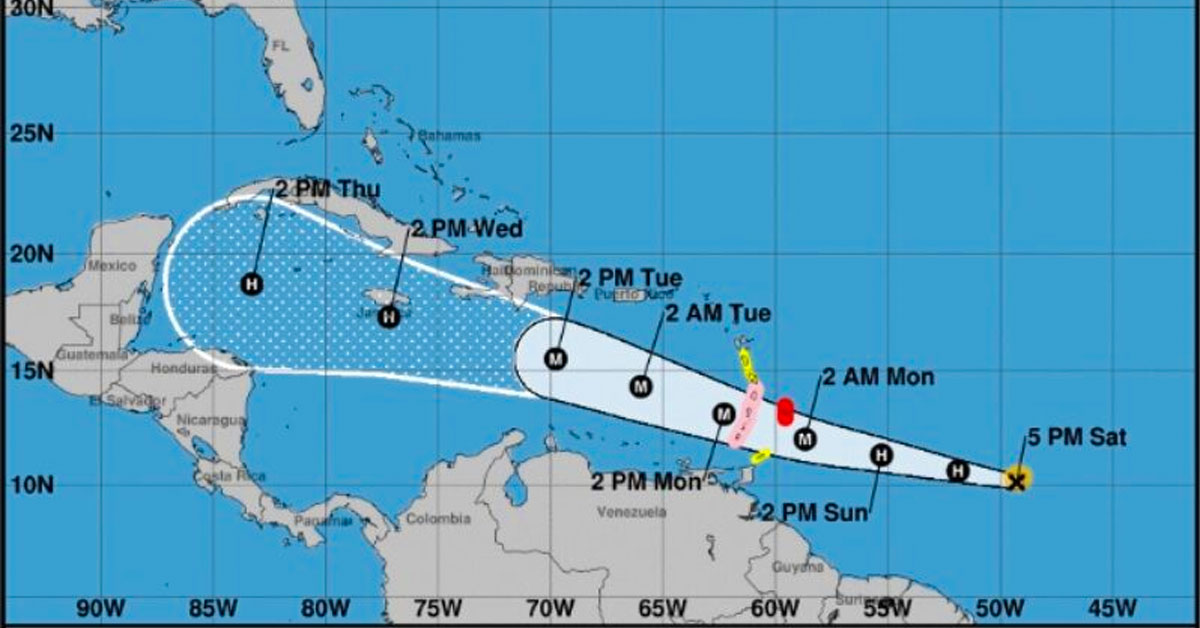Impact on Infrastructure

Hurricane beryl jamaica – Hurricane Beryl unleashed its fury on Jamaica, leaving a trail of destruction in its wake. Buildings, roads, bridges, and other critical infrastructure bore the brunt of the storm’s wrath.
Hurricane Beryl me a bad storm weh cause plenty damage inna Jamaica. It did rain hard and the wind did blow strong. The people dem did fraid and dem did haffi evacuate dem house. But thank God, the hurricane did pass and the people dem did safe.
Hurricane Beryl prediction did seh it was going to be a bad storm, and it was right. We need to listen to the hurricane predictions so that we can be prepared for when they come.
The hurricane’s ferocious winds ripped through communities, tearing apart roofs and shattering windows. Buildings crumbled under the relentless assault, with many reduced to rubble. Schools, hospitals, and other essential facilities sustained significant damage, disrupting vital services and displacing countless people.
Jamaica, brace yourself as Hurricane Beryl barrels towards your shores. Stay alert and heed official warnings. For the latest updates on Beryl’s path and expected landfall, visit where is beryl headed. Stay safe, Jamaica, as we navigate this storm together.
Repair and Recovery
In the aftermath of the storm, a massive repair and recovery effort was launched to restore Jamaica’s shattered infrastructure. Engineers and construction crews worked tirelessly to clear debris, repair damaged structures, and rebuild what had been lost.
- Roads and Bridges: Many roads and bridges were rendered impassable due to fallen trees, washed-out sections, and collapsed structures. Repair crews worked around the clock to clear debris, repair surfaces, and rebuild damaged bridges, restoring vital transportation links.
- Electrical Grid: The hurricane’s winds and flooding caused widespread power outages, disrupting essential services and leaving communities without electricity. Utility crews worked tirelessly to repair downed power lines, restore power to affected areas, and strengthen the electrical grid to withstand future storms.
- Water Supply: The storm also damaged water treatment facilities and distribution systems, leaving many communities without access to clean water. Water engineers and technicians worked to repair damaged infrastructure, restore water supply, and implement measures to prevent contamination.
- Telecommunications: Hurricane Beryl disrupted telecommunications networks, isolating communities and hindering communication. Telecom crews worked to repair damaged towers, restore service, and improve network resilience to ensure reliable communication during future storms.
Economic Consequences

Hurricane Beryl had a significant economic impact on Jamaica. The tourism sector, which is a major contributor to the country’s GDP, was particularly hard hit. Many hotels and resorts were forced to close due to damage, and tourism revenue was lost. The agricultural sector also suffered losses, as crops were destroyed and livestock was killed. Other sectors, such as manufacturing and transportation, were also affected by the hurricane.
Government Response and Recovery Plans, Hurricane beryl jamaica
The Jamaican government responded to the hurricane by providing emergency aid to those affected. The government also announced plans to provide financial assistance to businesses and farmers who suffered losses. The government is also working to repair damaged infrastructure and restore essential services.
Social and Humanitarian Effects: Hurricane Beryl Jamaica

Hurricane Beryl brought about a range of social and humanitarian challenges for Jamaican communities. The storm’s impact on infrastructure and housing left many people homeless, without access to basic necessities, and facing heightened vulnerability to health risks.
In the aftermath of the hurricane, aid organizations and volunteers played a crucial role in providing assistance to those affected. They distributed food, water, and shelter, and offered medical aid and psychosocial support to the affected population. The Jamaican government also implemented various measures to support recovery efforts, including providing financial assistance to affected individuals and families.
Challenges Faced by Communities
- Homelessness and Displacement: Hurricane Beryl caused widespread damage to homes, leaving many people homeless and displaced. This led to overcrowding in shelters and temporary housing, increasing the risk of disease outbreaks and other health issues.
- Loss of Livelihoods: The hurricane also disrupted livelihoods, as businesses were closed and agricultural activities were affected. This led to loss of income and economic hardship for many families.
- Health Risks: The destruction of infrastructure and disruption of water and sanitation systems increased the risk of waterborne diseases and other health hazards. Additionally, the lack of access to healthcare facilities made it difficult for people to receive necessary medical care.
Response of Aid Organizations and Volunteers
- Provision of Essential Supplies: Aid organizations and volunteers distributed food, water, and shelter to those affected by the hurricane. They also provided essential non-food items such as clothing, hygiene kits, and cooking utensils.
- Medical Aid: Medical teams provided first aid and other medical assistance to those injured or affected by the hurricane. They also set up temporary clinics to provide ongoing healthcare services to the affected population.
- Psychosocial Support: Aid organizations and volunteers provided psychosocial support to those affected by the hurricane, helping them to cope with the trauma and stress of the disaster.